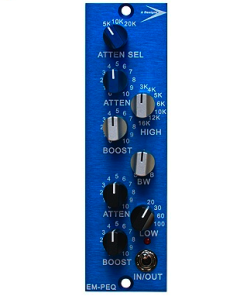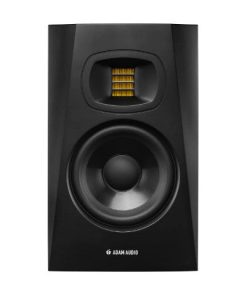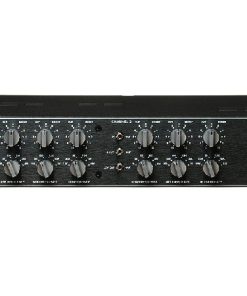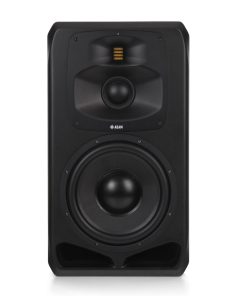Arturia ARP 2600 V3 License – Synthesizer Arturia
$ 149,00 $ 59,60
Coveted semi-modular classic.
ARP 2600 V reproduces one of the most desired synthesizers ever created, responsible for sounds ranging from ’70s funk textures to unmistakable special FX. Experience it in perfect plugin detail, with enhancements overflowing with creative ideas for any genre.
The ARP 2600 went from educational concept to rock ’n’ roll icon, and was the sound of both R2-D2 and Edgar Winter’s “Frankenstein.”
A modular synth in a suitcase, the 2600 immediately appealed to musicians. You could patch it like crazy, but didn’t need to. Its versatile sound became a favorite of Stevie Wonder, Josef Zawinul, Tony Banks of Genesis, Martin Gore of Depeche Mode, and many more. Combining True Analog Emulation® signature authenticity with vastly expanded features, ARP 2600 V is designed to become one of your favorites too.
To Patch or Not To Patch
Like the original, ARP 2600 V has a normalled signal path. Get great sounds right away or experiment with patch cables – it’s up to you!
Essential Ingredient
Whatever your musical style, something you do will call for the inimitable sound of the 2600. You may as well have the best software emulation there is.
Modular Mentor
With a left-to-right layout that follows signal flow, there’s no better way to learn the fundamentals of synthesis than with ARP 2600 V.
All Bases Covered
Combining modular freedom, easy sequencing, and real-time keyboard performance controls, ARP 2600 V is an instant gratification machine – you’ll lose yourself in no time.
It Came FromOuter Space
Alan R. Pearlman designed electronics for NASA. His passion for music soon sent a new kind of synthesizer into orbit.
It was this passion, combined with his engineering expertise, that led him to found ARP Instruments. ARP not only built some of the most complex and coveted synths of their time; the name left a lasting impact on the world of synthesis, contemporary music, and even cinema.
By 1968 Pearlman had already helmed and sold a successful company that made operational amps based on his aerospace work, but became interested in building electronic instruments after hearing that a certain famous synth brand had issues with temperature and tuning. His own early designs proved more stable, inspiring him to press forward.
In 1969 Pearlman and David Friend formed Tonus, later rebranded as ARP after Pearlman’s initials. Their first product was the 2500, a large modular system that used a matrix of sliders instead of patch cables.
Main Features
All the parameters of the original ARP 2600:
- 3 voltage-controlled oscillators
- Osc2->Osc1 synchronization
- 24 dB/octave low pass resonant filter with self-oscillation
- 1 LFO (can be synchronized to the host sequencer’s tempo)
- 1 sample and hold, 1 ring modulator, 1 noise generator
- 1 ADSR & 1 AR envelope follower
ARP2500 multimode 12 dB/octave filter with LP, HP, BP and Notch settings
Original ARP Sequencer model 1601
4 exclusive tracking generators with real-time interactive LFO creation ability
Voltage processors can be used as inverters, mixers or lag processors
Onboard effects: chorus, MIDI-syncable stereo delay, reverb
Polyphony from 2 to 32 voices with Unison options
More than 500 presets from top sound designers
Absolutely pure, top quality sound from TAE® analog modeling
Platform specifications
Windows
- Win 8.1+ (64bit)
- 4 GB RAM
- 2.5 GHz CPU
- 2GB free hard disk space
- OpenGL 2.0 compatible GPU
Required configuration
- Works in Standalone, VST, AAX, Audio Unit, NKS (64-bit DAWs only).
Apple
- Mac OS 10.13+
- 4 GB RAM
- 2.5 GHz CPU
- 2GB free hard disk space
- OpenGL 2.0 compatible GPU
Protection
- The software is protected by the Arturia Software Center.
Prompt Delivery and Professional Packaging
Our long-standing partnership with UPS FedEx DHL and other global carriers lets us offer a range of shipping services. Our warehouse staff is extremely skilled and will package your items according to our precise and exact specifications. Your goods will undergo an extensive inspection and be safely packaged prior to being sent out. Each day, we ship to thousands of customers in many countries. The fact that we are committed to becoming the biggest online retailer in the World is clear. These warehouses are in Europe in the same way as they are in USA.
Note: Orders that include more than one item are assigned a processing period depending on the item.
Before shipping, we will inspect thoroughly the items you have ordered. Most orders are shipped within 48 hours. Expected delivery time is between 3-7 days.
Returns
Stock is dynamic. It's not entirely managed by us since we are involved with multiple entities, including the factory and the storage. The actual stock can change at any moment. It is possible that your order may be out of stock once the order has been placed.
Our policy lasts for 30 days. We cannot exchange or refund your order if it has been 30 days from the date of purchase.
For your item to be returned it must be in its original packaging, unopened and in the condition you received it. The item must be in its original packaging.
Related products
Equalizers
Recording Equipments
Recording Equipments
Microphones
Subwoofer
Monitor Systems
Recording Equipments
Monitor
Accessories
Microphones
500 Series
Monitor
Microphones
Mic Preamp
Recording Equipments
Monitor
Monitor Systems
Microphones
Monitor Systems
Subwoofer
Recording Equipments
500 Series
Recording Equipments
Equalizers
Monitor Systems
































































